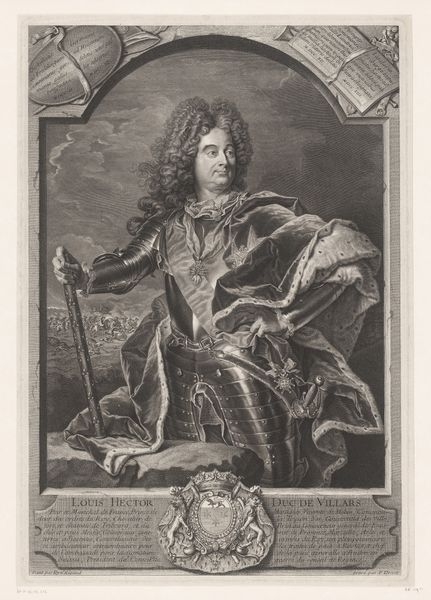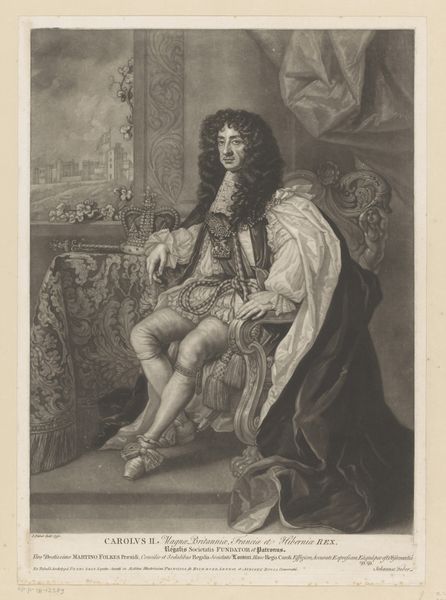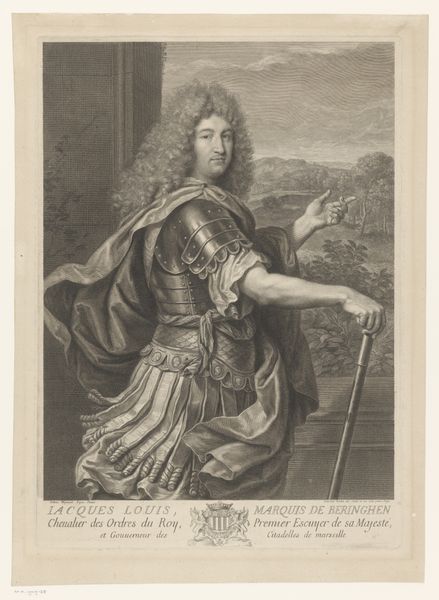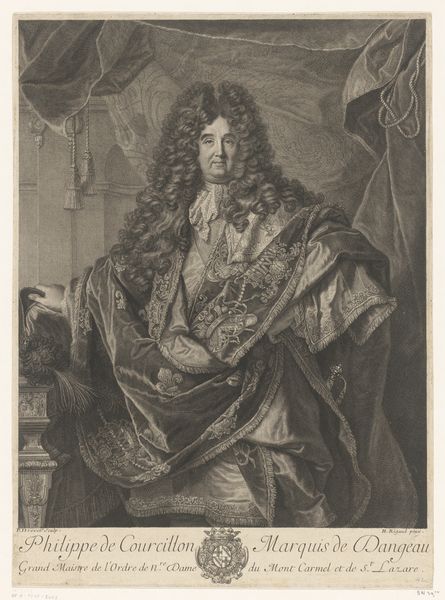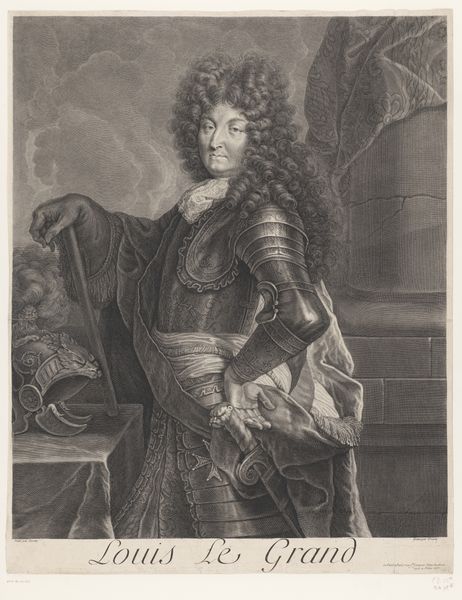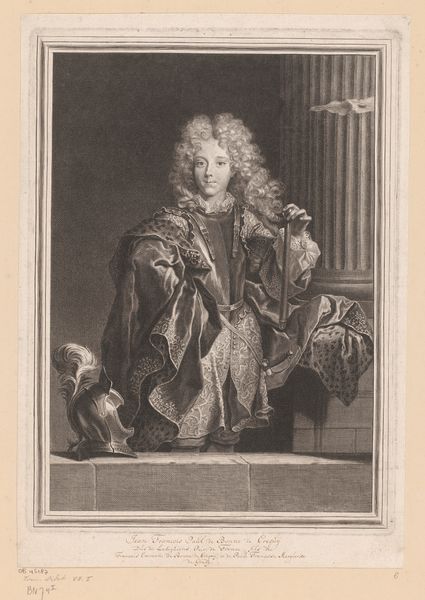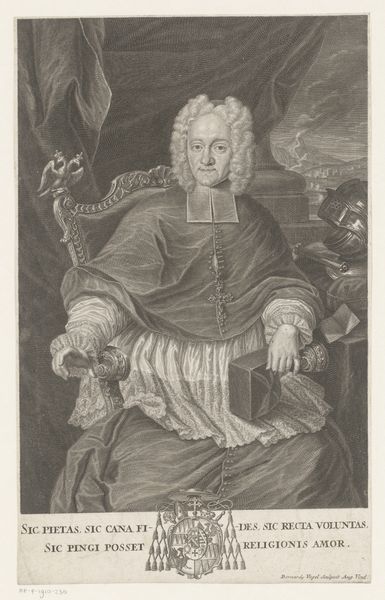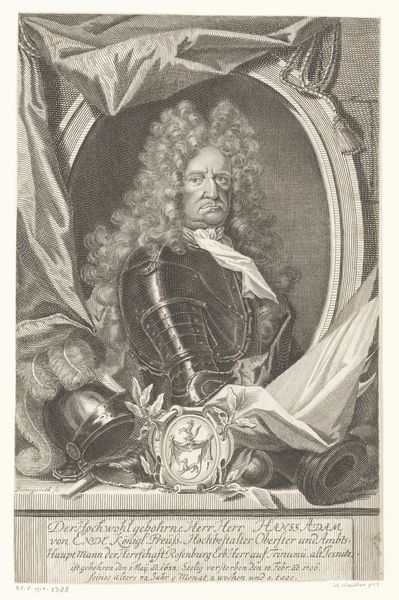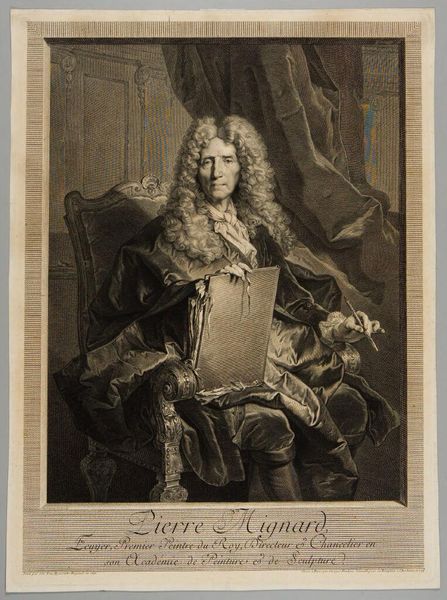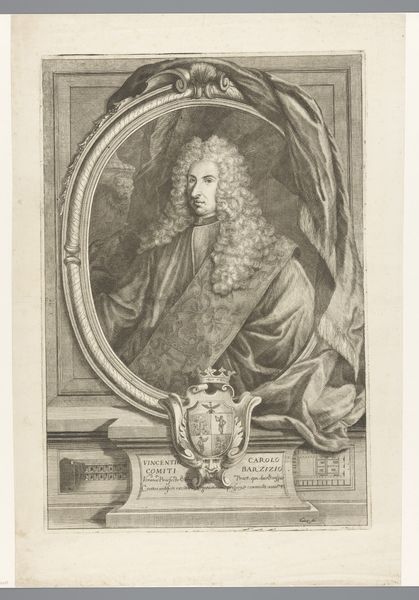
print, engraving
#
portrait
#
baroque
# print
#
charcoal drawing
#
history-painting
#
engraving
Dimensions: height 686 mm, width 469 mm
Copyright: Rijks Museum: Open Domain
Editor: Here we have an engraving, a "Portret van Lodewijk XIV van Frankrijk," or Portrait of Louis XIV of France, made sometime between 1660 and 1683. The scale of Louis, enthroned and robed, and the detail included in the print are impressive! What strikes you most about this portrayal of the Sun King? Curator: What strikes me is the carefully constructed performance of power. This isn’t simply a likeness; it’s a calculated piece of propaganda disseminated through printmaking. How do you think prints like these functioned in building Louis' image, especially considering they were reproducible and circulated widely? Editor: That’s a good point. Being able to make prints allowed the image of Louis XIV to permeate all levels of French society as well as elsewhere in Europe, standardizing how he would be seen. Curator: Exactly! The costume, pose, and background all contribute to the construction of an all-powerful persona. Look at the gaze, the hand on the scepter, the placement of the foot—what do these details communicate, and to whom? Editor: There's a clear message that Louis is in control. He's literally looking down on us, his subjects, even in this print. His garments further enforce his wealth, importance, and kingly status. It feels like everything in this image exists to show that power. But what about those figures in the background, next to the architecture? What role are they playing in the print? Curator: Ah, good observation! Those are likely soldiers. Their inclusion reinforces Louis XIV’s military might and hints at France’s political ambitions during his reign. This wasn't merely about aesthetic representation; it was about establishing and maintaining dominance through visual culture. These prints reinforced the state's control over image-making, reflecting the king’s agenda. Editor: So, more than just a portrait, it's a powerful political statement meant to broadcast Louis XIV’s authority far and wide. Thanks, I’m now considering it within the broader scope of political image-making at the time. Curator: Precisely. Understanding the historical context and the function of art within society reveals how carefully crafted even seemingly straightforward portraits can be.
Comments
No comments
Be the first to comment and join the conversation on the ultimate creative platform.
